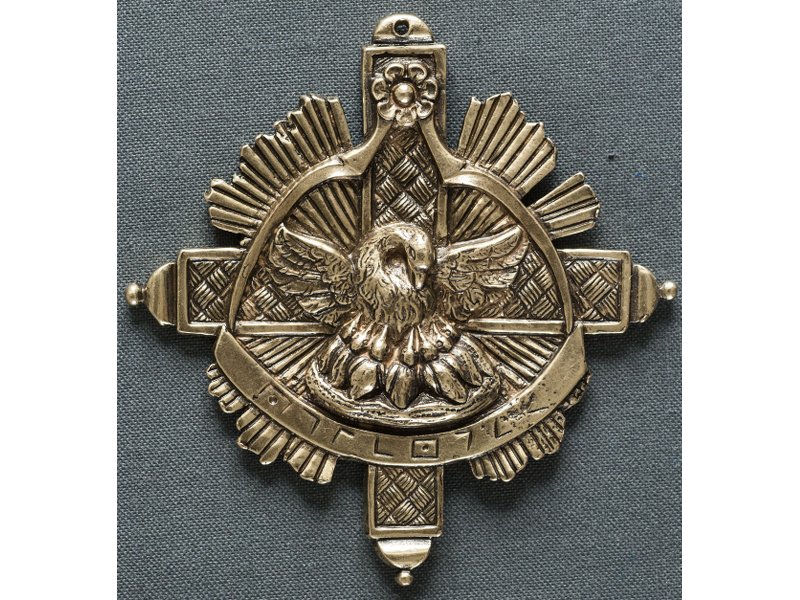


« Pour rester libre un média ne doit dépendre que de ses lecteurs »
Amis lecteurs, Frères, Sœurs, ou profanes,
La gestion professionnelle et indépendante d’Hiram.be, Le Blog Maçonnique a un coût, qui croît régulièrement. Aussi, afin d’assurer la pérennité du blog et de maintenir sa qualité, je me vois contraint de rendre son accès payant. Rassurez-vous, la somme demandée est très minime : 20 € par an !
De plus, afin de ne pas « racketter » les nombreux visiteurs occasionnels et de permettre aux nouveaux lecteurs de découvrir un peu le blog avant de s’y abonner, la consultation de trois articles est offerte aux non abonnés. Mais dans tous les cas, afin de pouvoir gérer ces gratuits et l’accès permanent, la création d'un compte est préalablement nécessaire.*
Alors, si vous aimez Hiram.be et êtes satisfaits du service d’informations maçonniques qu'il vous rend chaque jour, soutenez-le, créez votre compte et réglez dès aujourd’hui vos 20 € pour votre accès permanent et illimité d'un an au blog.
D’avance je vous en remercie.
Géplu.
* Je certifie qu’Hiram.be ne fera aucun commerce et ne transmettra à personne les données recueillies, collectées à la seule fin de la gestion de ses abonnements. Géplu.
The English should be equivalent to battle field not fortress. It is the clearing surrounding a fortress, so that it has an unobstructed field of vision for its lines of sight. They also used these fields to feed animals used by the garrison. The fortress part of the definition comes from the word Kimberley. This place name is derived from three Old English elements: the first & second are Cyne (royal, king) burg (fortress), which means « royal fortress »; the second element is lēah, which means « woodland » or « clearing ». This place name was recorded in the Domesday Book of 1086 as Chineburlai (King’s fort’s battlefield or battleground). This first known appearance of this name. I guess burg is related to Bourge, Berg, Berne (Gaulish for cleft) or Roche since all of these are typonym for geographic strong points. For instance Gibraltar, Monaco, and San Marino are described as Roche.
Loëx, of the old and middle German lei, leie , « rocky slope, more or less covered with a meager grass ». There is also other German meanings of delicate, transparency, or embankment wall. The English equivalent is leigh meaning a meadow around a fortress or delicate. From Middle English legh, lege, lei (“clearing, open ground”) from Old English lēah (“clearing in a forest”) from Proto-Germanic *lauhaz (“meadow”), from Proto-Indo-European *lówkos (“field, meadow”).Akin to Old Frisian lāch (“meadow”), Old Saxon lōh (“forest, grove”) (Middle Dutch loo (“forest, thicket”); Dutch -lo (“used in placenames”)), Old High German lōh (“covered clearing, low bushes”), Old Norse lō (“clearing, meadow”). More at Waterloo. The x at the end is « s » plural, so it means meadows. There is a town on both sides of the border with France and Switzerland named Loëx around Geneva. In fact Loëx is a geographical description of Geneva and its surroundings. In the Swiss etymological dictionary of typonyms it is defined as Rocher, which means a mass of projecting rocks. In Hebrew Sharon means plain, so Rose Loëx could be a translation of Rose Sharon.
Bonjour j’ai moi aussi été intrigué par ce mot « Loex ». Il pourrait correspondre a un nom de ville dont une en Suisse semble-t-il dotée d’un beau jardin. Mais également au nom d’une poire (fruit) dont la fleur affecte la forme d’une rose. Mais p.e envisager de remplacer le lettres par des nombres de 1 à 9???
Pour Rosa Loex… je me suis aussi posé la question… mais je n’ai pas de réponse: une erreur du graveur ? un « mot » maçonnique oublié ? Je ne sais pas.
Superbe bijou en effet. Seulement je ne comprends pas l’inscription en alphabet maçonnique qui est celle-ci : ROSE LOEX. Que peut bien signifier LOEX ?
Parfait pour une panoplie de prince-abbé de l’église gnostique apostolique de la rose+croix !
Tau Blairôn.
En fait c’est surtout un bijou Rose-Croix. Roëttiers est certes un des pères fondateurs du Rite Français… mais il était aussi 33e et membre du Suprême Conseil. Conclusion… On prend aussi les clients du REAA 🙂
Bonjour le bijou est il toujours en vente ?
Oui, il faut contacter le Musée à thierry.cuzin@godf.org